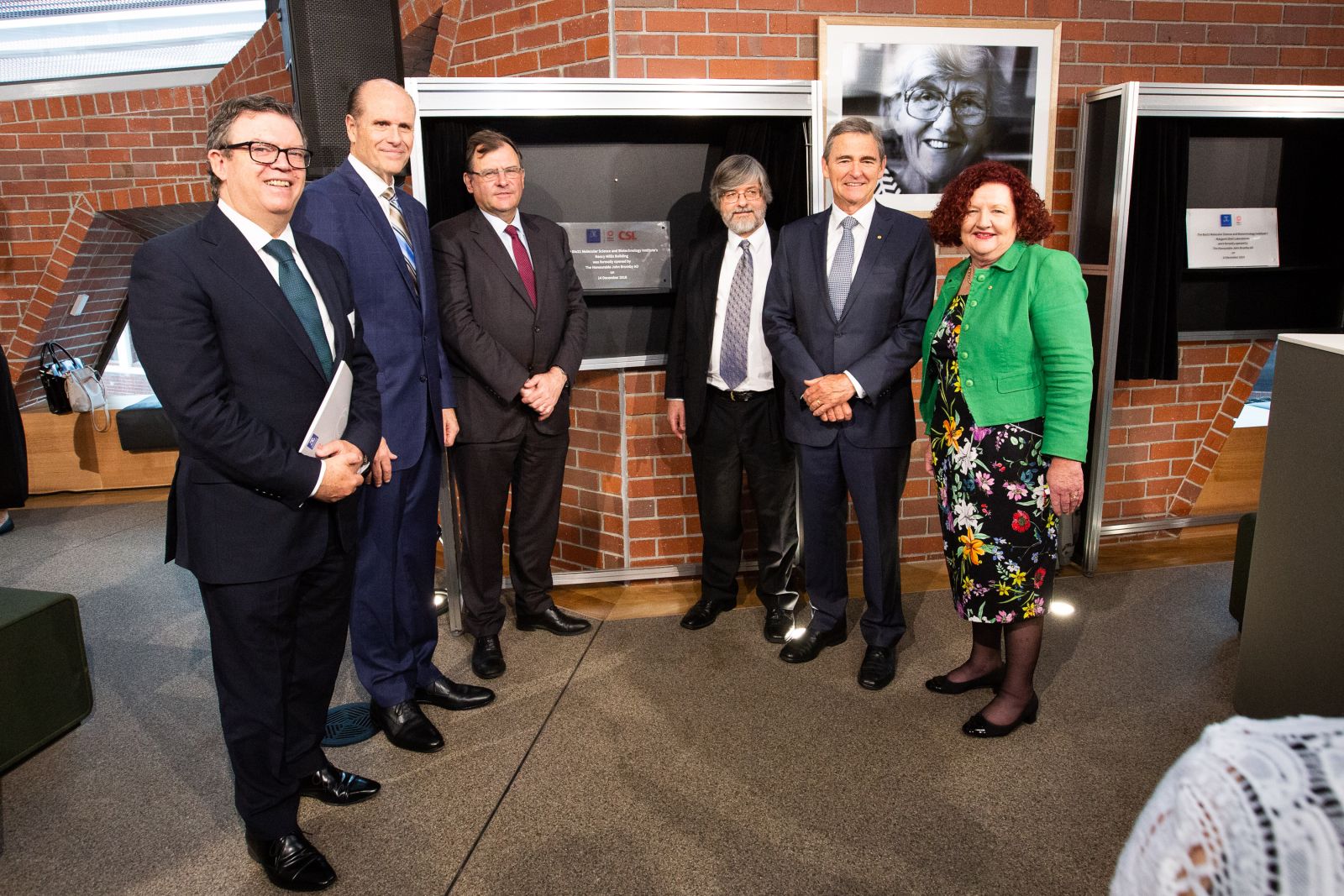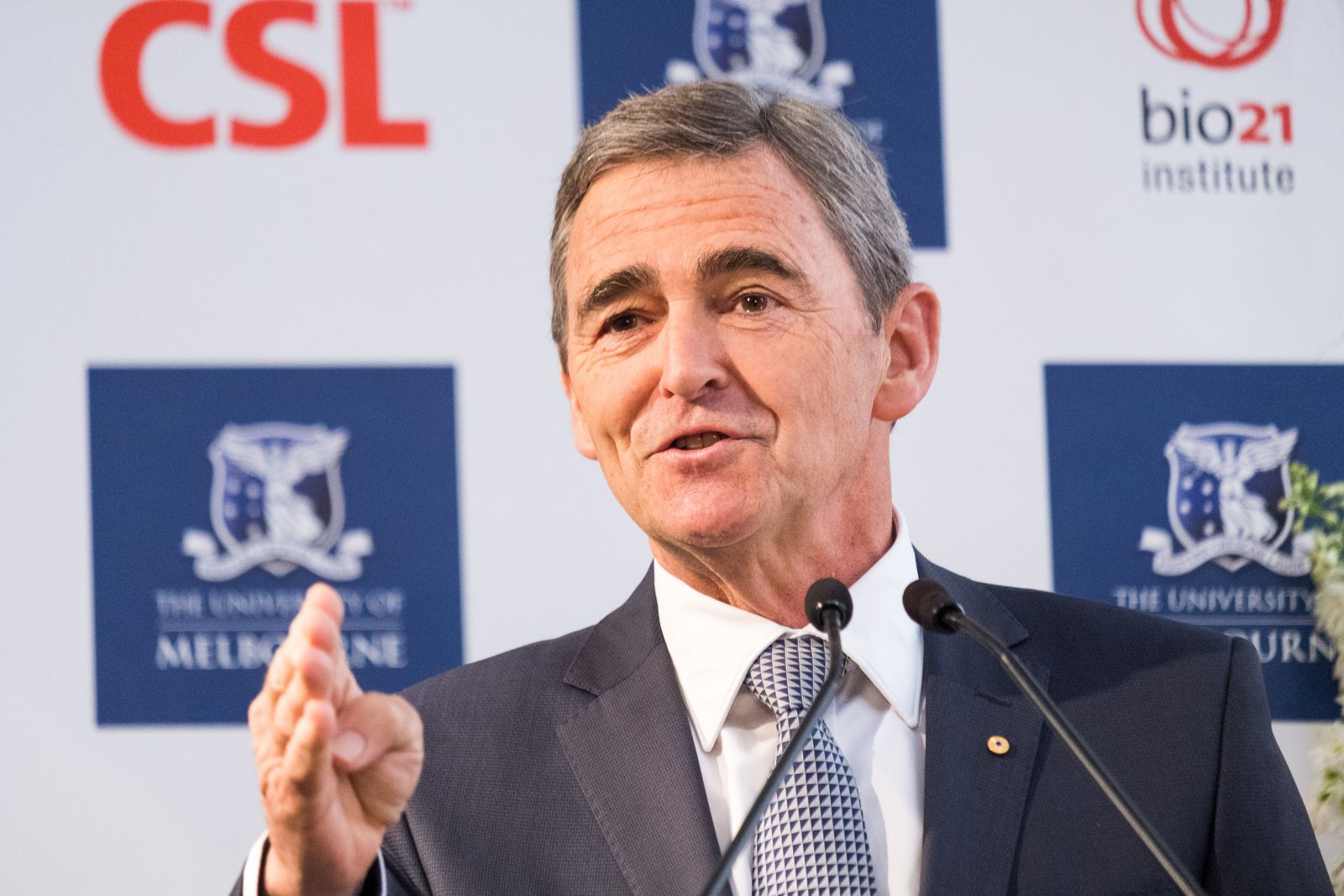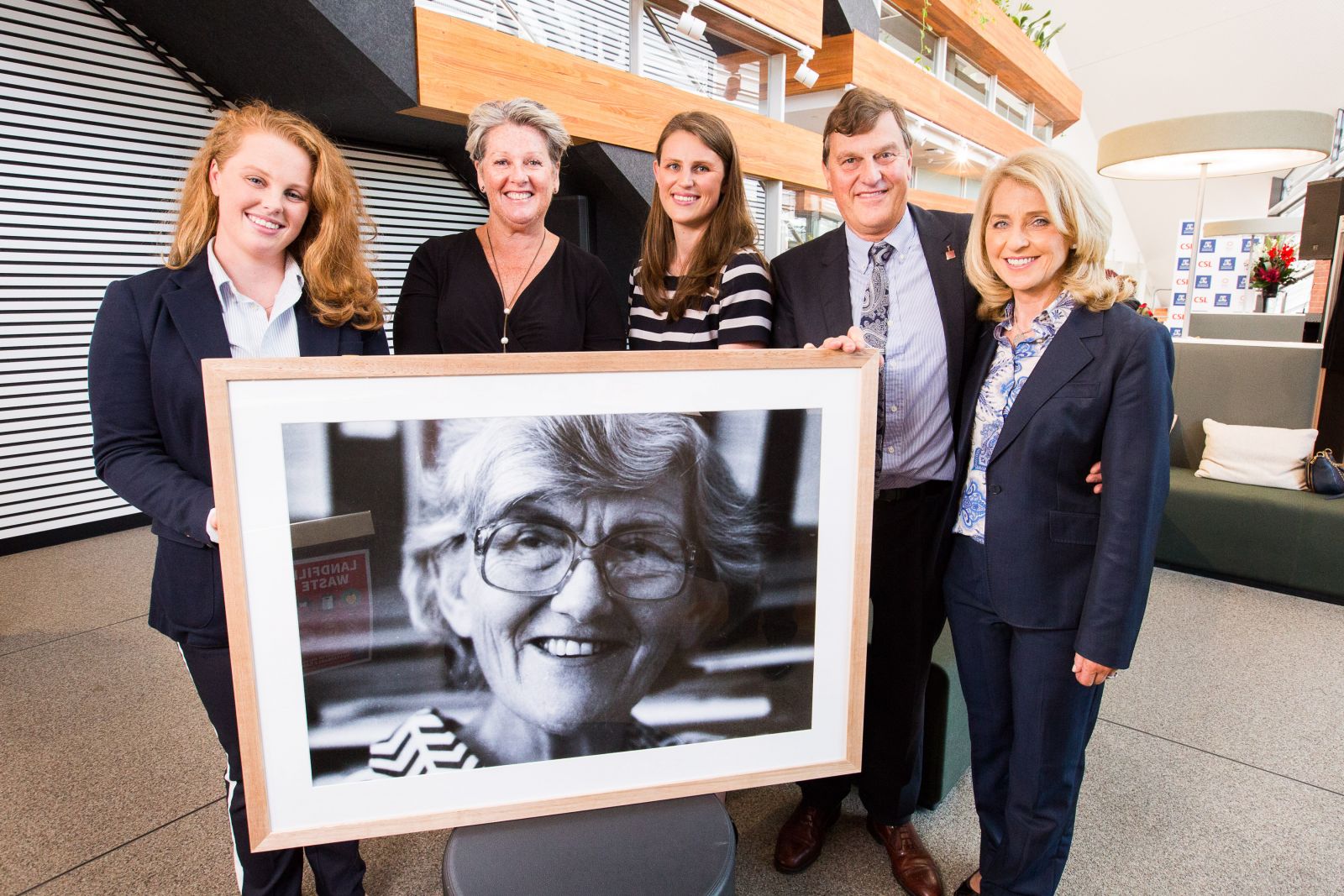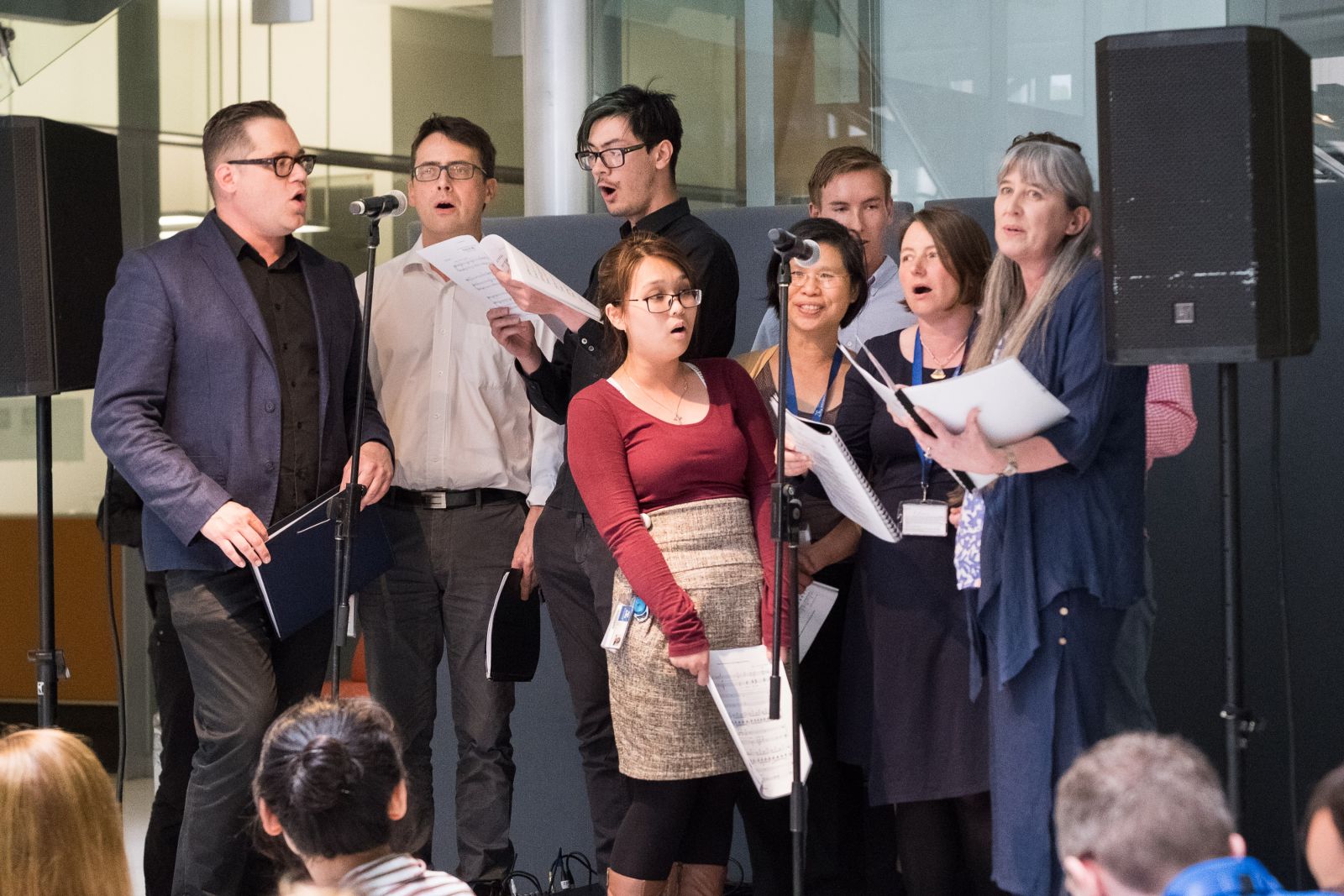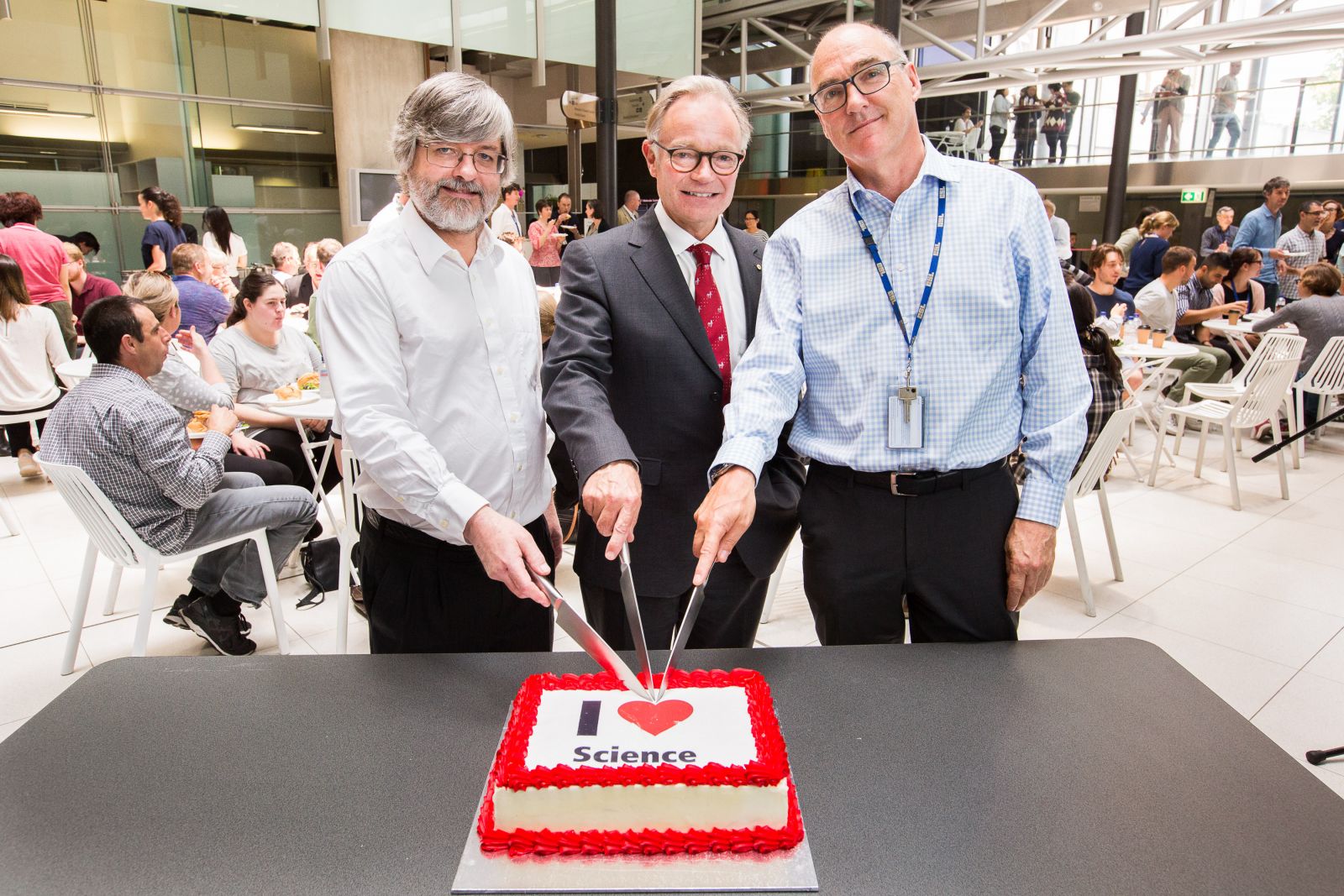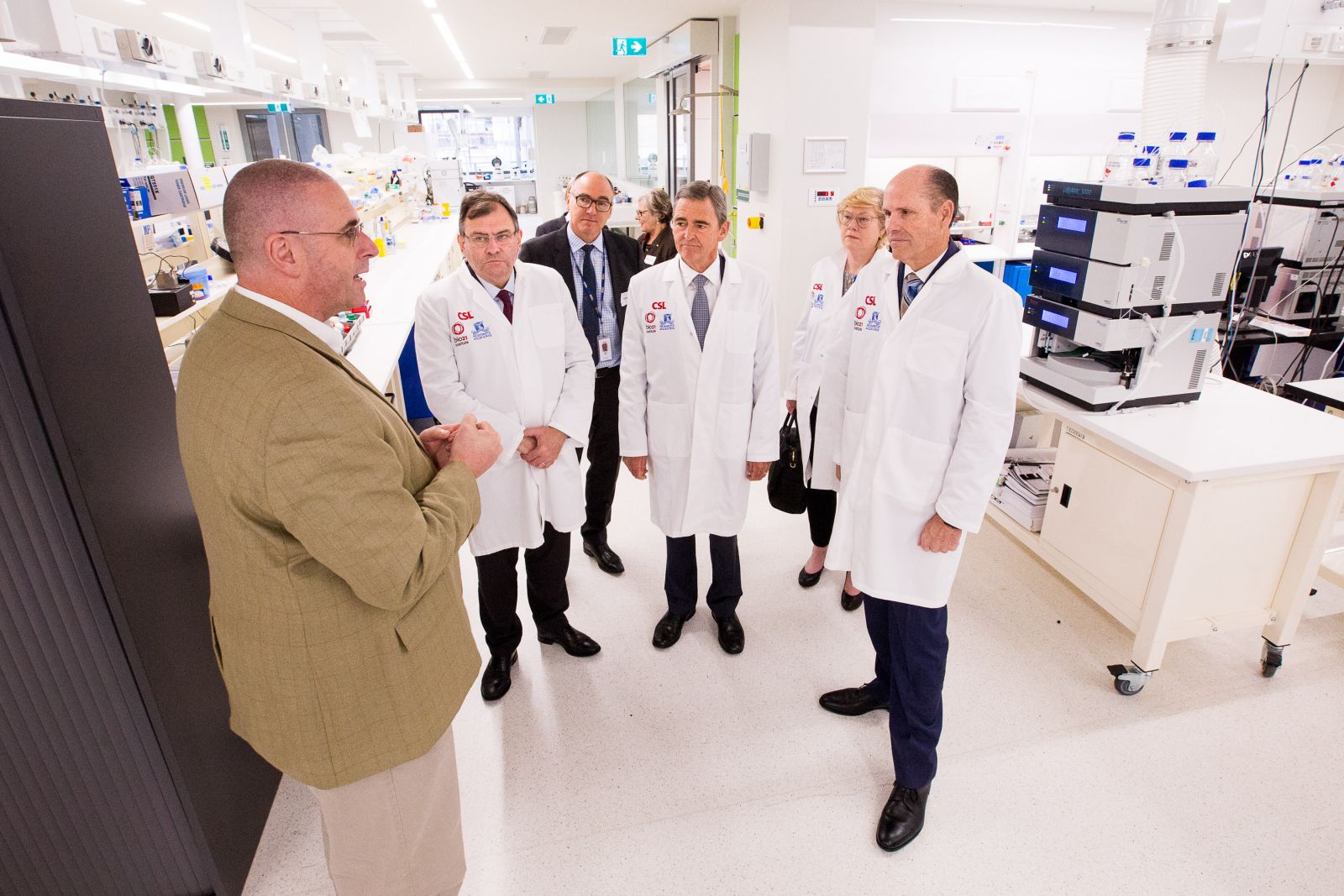Director's Blog - 20 December 2018 - So much to be grateful for...
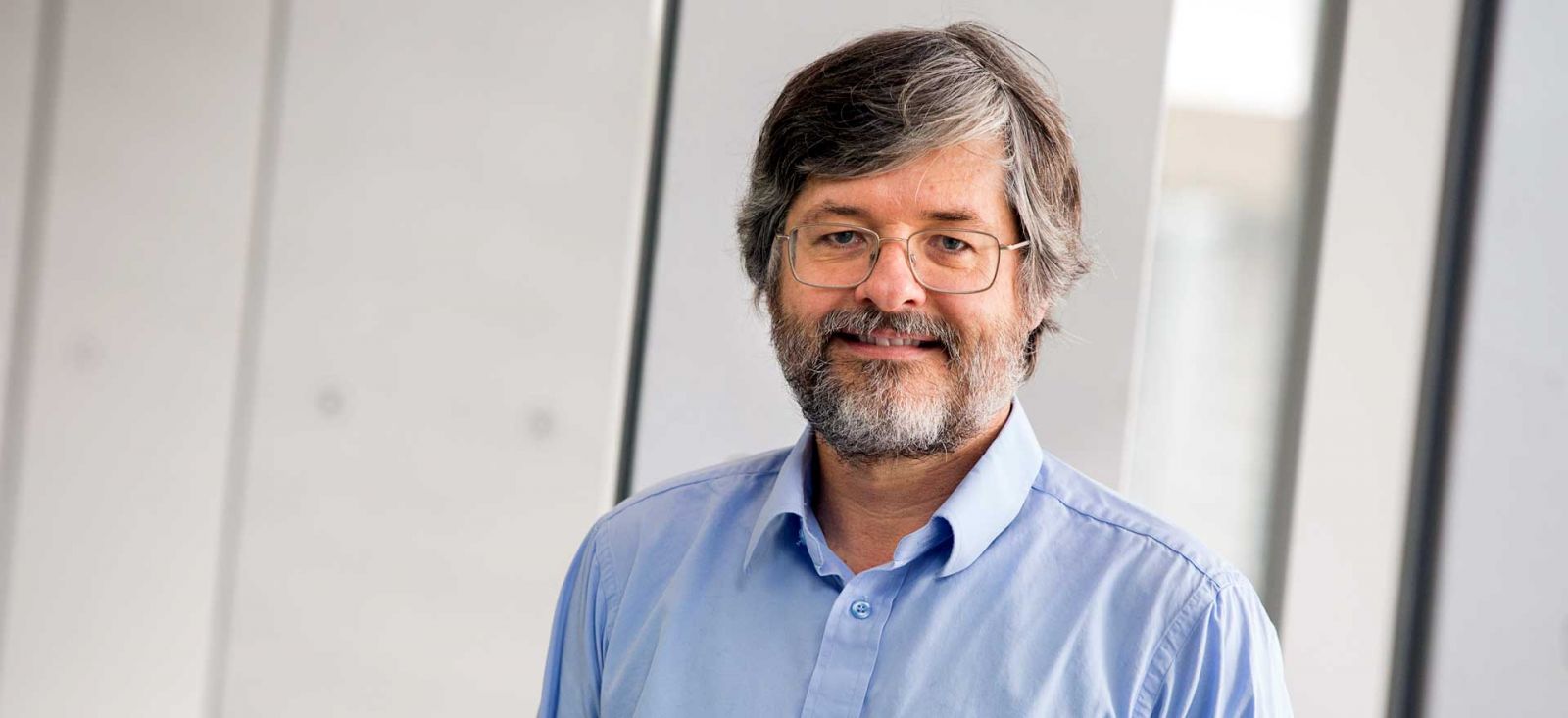
As we have arrived at the end of the year and social gatherings fill our calendar, it is a time,
- to celebrate and reflect on the challenges and the achievements of the past year;
- to give and receive gifts, as tokens of our appreciation, strengthening our relationships.
The biggest event and gift to us all in the Bio21 calendar for this year took place last Friday, 14 December, where Bio21 celebrated the long-awaited opening of the Nancy Millis building and the Margaret Sheil laboratories. The two plaques were unveiled by the Honourable John Brumby, Chairman and Director of Biocurate and former Premier of Victoria. In 2005 the then Premier Steve Bracks with John Brumby, Treasurer and Innovation Minister and Bronwyn Pike, the Health Minister, officially opened the Bio21 Institute David Penington building, so it was wonderful to have John Brumby continue to be part of the Bio21 story.
It was also a great opportunity to honour two trail-blazing women: Nancy Millis and Margaret Sheil through the naming of the building and the Mass Spectrometry facilities. We were delighted that members of the Millis family as well as Margaret and her daughter were there at the celebrations.
As you know, the building has been made possible through a collaboration and joint funding between CSL and the University of Melbourne and the celebrations continued beyond the official ceremony with lunch, choir, cupcakes and coffee during our Bio21/CSL staff party.
|
|
|
|
|
|
|
|
Here, I’d like to take the opportunity to highlight the ‘good’ and the ‘great’ and we’ll work on the rest in the New Year.
Government research grants as well as major philanthropic grants have recently been announced and will ensure Bio21 research and researchers continue to be funded in the years to come:
ARC grants were announced on the 27 November and I wish to congratulate Sally Gras, Ary Hoffmann, Craig Hutton, Justine Mintern, Gavin Reid, Frances Separovic, David Stroud, Sebastian Duchene and Jose Villadangos for the funding they have received to pursue important work in the areas of protein synthesis, mass spectrometry lipidomics, immune host defence, Wolbachia in Drosophila, nuclear magnetic resonance, cell trafficking, improving species ability to adapt to environmental change, pathogen evolution and synthetic biology. In this highly competitive funding environment it is a credit to the researchers, who have been recipients this time around.
Congratulations to Institute members Danny Hatters, Jose Villadangos, Malcolm McConville, Justine Mintern, Stuart Ralph, Gavin Reid, David Stroud, and Paul Gleeson, who received NHMRC Research Fellowships and Project Grants in the last funding round announced 12 December. These grants will fund research into antigen presentation and inflammation; neurodegenerative diseases; pathogen genomics; lipodomics in colon cancer; proteomics; parasitic protozoa and malaria.
On the 28 November, Bio21 received substantial funding from another source: the grant that we submitted to the Australian Cancer Research Foundation (ACRF) earlier in the year to fund a Facility for Innovative Cancer Drug Discovery was successful and so last week I donned a suit and tie to receive a framed certificate and cheque for $2M from the Governor General, Sir Peter Cosgrove, at Admiralty House in Sydney.
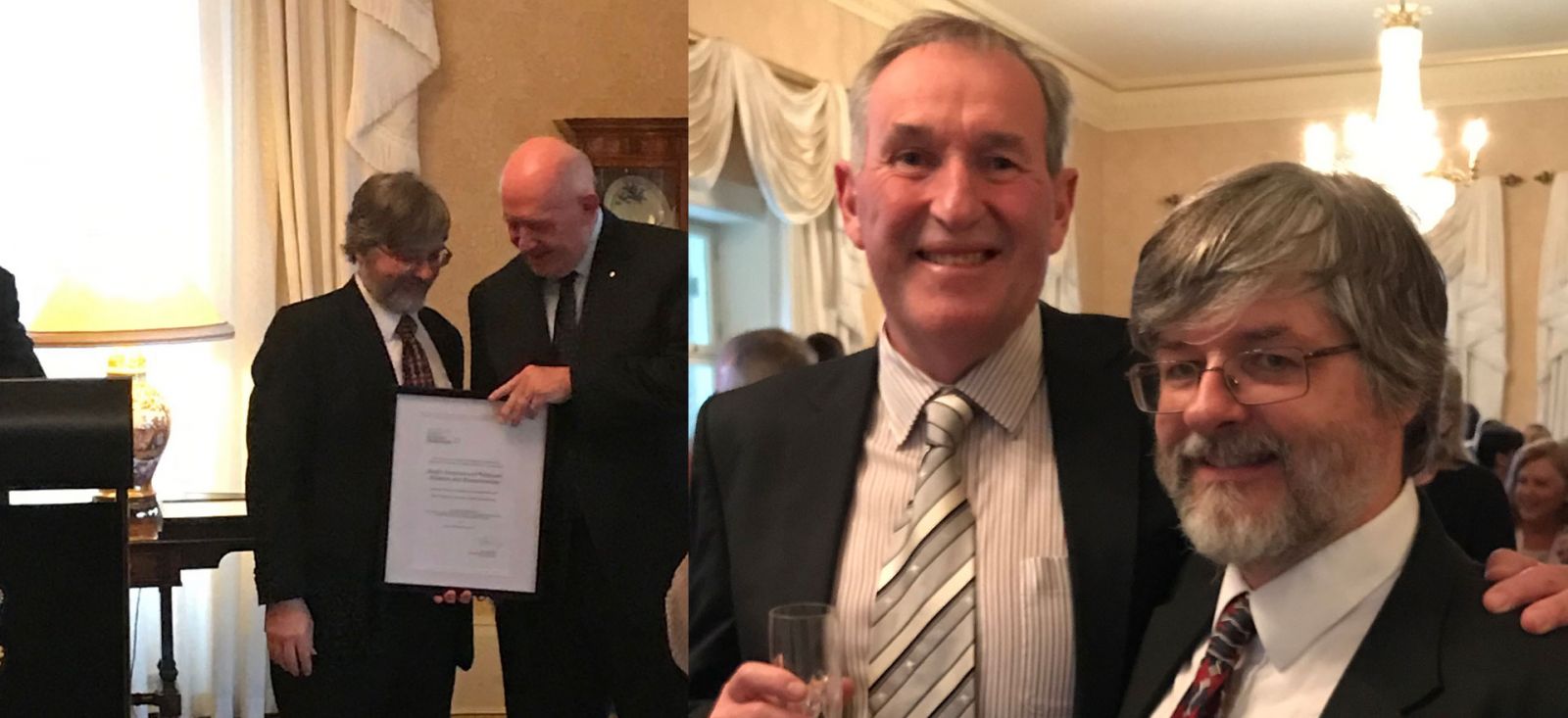 David Ascher and I were the chief investigators on the grant from Bio21, together with Rick Pearson, Peter MacCallum Cancer Centre and John Silke of the Walter and Eliza Hall Institute, representing some of Victoria’s major cancer research institutions – a great example of successful collaboration!
David Ascher and I were the chief investigators on the grant from Bio21, together with Rick Pearson, Peter MacCallum Cancer Centre and John Silke of the Walter and Eliza Hall Institute, representing some of Victoria’s major cancer research institutions – a great example of successful collaboration!
On Monday, 3rd December, it was announced at the annual ACRF Chairman’s dinner, attended by David and Rick, that the Ovarian Cancer Research Foundation would provide funding for operators over three years to help run the new facility and particularly help drive outcomes in ovarian cancer research. We really appreciate this generous support.
The ACRF funding will make it possible to create a facility that houses some of the most cutting-edge structural biology instruments and technologies for the identification and development of drugs for cancers. The Facility will be part of the Melbourne Protein Characterisation platform that is being established in the basement of the David Penington building by Yan Hong Tan.
With the new facility, we will be a key go-to service for the cancer research community in the Melbourne Biomedical Precinct and beyond for structural biology work in drug discovery. Structural biology holds the key to developing innovative cancer drugs by providing detailed information about the shape of molecules that are involved in cancer-causing biological signalling pathways within cells of our bodies. Structural biology has played a key role in targeted molecular medicines including imatinib (Gleevec) to treat myeloid leukaemia, venetoclax for leukaemia and gefitinib for lung cancer.
It was only in the last Digest, that we celebrated the official opening of the ACRF Translational Proteomics Facility on the 19 November.
On their website, the ACRF state that ‘Our mission is to outsmart cancer by providing world-class scientists with the equipment they need to improve prevention, diagnosis and treatment of all types of cancer.’
The grants awarded by the ACRF are made possible through the generosity of many donors who contribute to the foundation, often people who have personally been affected by a cancer diagnosis. The ACRF states: ‘Thanks to our generous supporters, we have awarded 73 grants totalling $153.2 million to world-class Australian research initiatives.’
Finally, but definitely not least, a $2.5M grant from Australian Wool Innovation (AWI) was awarded to Bio21’s Trent Perry, Batterham lab, along with Clare Anstead and Vern Bowles (FVAS) and a research group in CSIRO for a vaccine project to tackle fly strike. This is a wonderful outcome and highlights the opportunities and possible synergies with our neighbours.
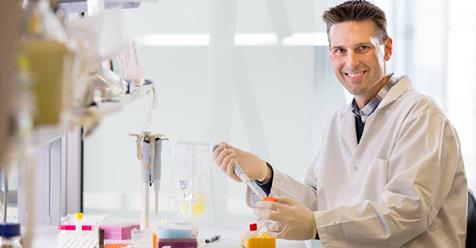 As we receive these grants to pursue our work, let us recognise with gratitude the generosity of those who make our work possible through their contributions.
As we receive these grants to pursue our work, let us recognise with gratitude the generosity of those who make our work possible through their contributions.
Professor Michael Parker
Director, Bio21 Institute

